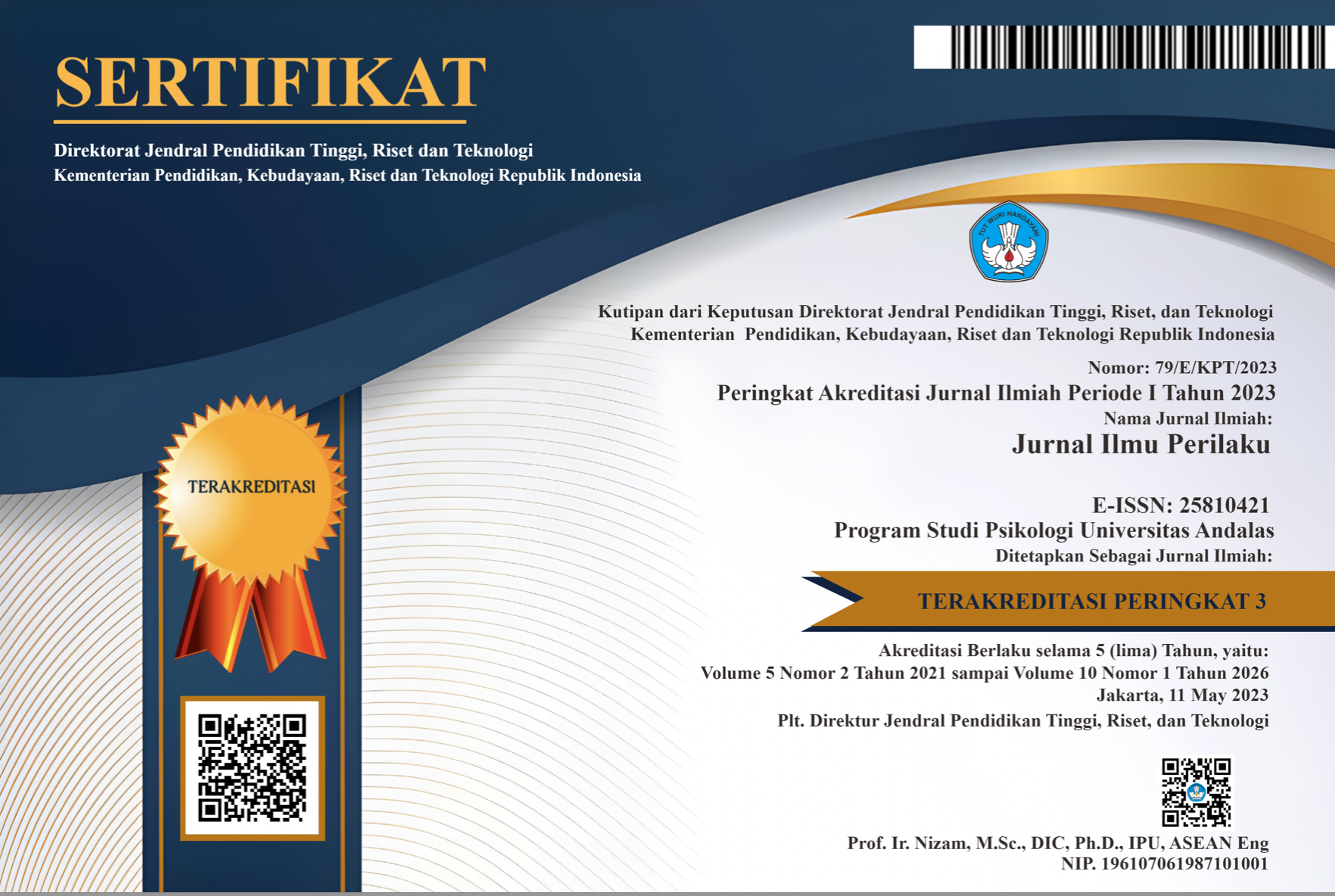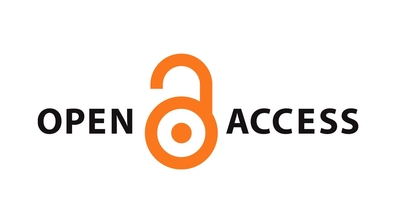Pemenuhan Kebutuhan Dasar Psikologis dan Engagement Siswa Pada Pelajaran Matematika
Abstract
Abstract. Engagement in learning activities is important to get the knowledge and skills provided at school. Previous studies on engagement prove that engagement is a predictor of student learning, learning outcomes, student retention and graduation. Therefore, to be able to make students more engaged with learning activities, it is necessary to know the factors that can influence the engagement. In this study, we will examine the effect of fulfilling need for autonomy, competence and relatedness on behavioral and emotional engagement. Measurements were made by distributing questionnaires in the form of self-reports to respondents. Respondents from this study were 291 students of class VII and VIII MTs Jatinangor. The data analysis technique used is PLS-SEM, path analysis. The results showed that behavioral and emotional engagement were positively and significantly influenced by meeting the needs of competence and relatedness. Then it was also found that this engagement was influenced negatively and significantly by autonomy needs.
Downloads
References
Dilah, A. (2019). Pengaruh basic psychological needs terhadap engagement mahasiswa fakultas psikologi universitas padjadjaran. (Skripsi tidak dipublikasikan). Fakultas Psikologi Universitas Padjdjaran, Bandung.
Fornell, C., & Larcker, D. F. (1981). Evaluating structural model with unobserved variables and measurement errors. Journal of Marketing Research.
Furrer, C., & Skinner, E. (2003). Sense of relatedness as a factor in children’s academic engagement and performance. Journal of Educational Psychology, 95(1), 148–162. https://doi.org/10.1037/0022-0663.95.1.148
Ghozali, Imam. (2008). Structural Equation Modeling Metode Alternatif dengan Partial Least Square, Edisi 2, Semarang: Badan Penerbit Universitas Diponegoro
Guthrie, J. T., Wigfield, A., & You, W. (2012). Handbook of Research on Student Engagement. In Handbook of Research on Student Engagement. https://doi.org/10.1007/978-1-4614-2018-7
Hair, J. F., Black, W. C., Babin, B. J., & Anderson, R. E. (2010). Multivariate data analysis. In Pearson custom library. https://doi.org/10.1038/259433b0
Jang, H., Kim, E. J., & Reeve, J. (2012). Longitudinal test of self-determination theory’s motivation mediation model in a naturally occurring classroom context. Journal of Educational Psychology, 104(4), 1175–1188. https://doi.org/10.1037/a0028089
Jang, H., Kim, E. J., & Reeve, J. (2016). Why students become more engaged or more disengaged during the semester: A self-determination theory dual-process model. Learning and Instruction, 43, 27–38. https://doi.org/10.1016/j.learninstruc.2016.01.002
Jang, H., Reeve, J., & Deci, E. L. (2010). Engaging Students in Learning Activities: It is Not Autonomy Support or Structure but Autonomy Support and Structure. Journal of Educational Psychology, 102(3), 588–600. https://doi.org/10.1037/a0019682
Jatnika, R. (2018). Belajar statistik dengan UNPAD SAS. UNPAD Press: Bandung.
Ketchen, D. J. (2013). A Primer on Partial Least Squares Structural Equation Modeling. Long Range Planning. https://doi.org/10.1016/j.lrp.2013.01.002
Liu, X., & Flick, R. (2018). The relationship among psychological need satisfaction, class engagement, and academic performance: Evidence from China. Journal of Education for Business, 0(0), 1–10. https://doi.org/10.1080/08832323.2018.1541855
Miserandino, M. (2005). Children who do well in school: Individual differences in perceived competence and autonomy in above-average children. Journal of Educational Psychology, 88(2), 203–214. https://doi.org/10.1037/0022-0663.88.2.203
Niemiec, C. P., & Ryan, R. M. (2009). Autonomy, competence, and relatedness in the classroom:Applying self-determination theory to educational practice. Theory and Research in Education, 7(2), 133–144. https://doi.org/10.1177/1477878509104318
Núñez, J. L., & León, J. (2019). Determinants of classroom engagement: a prospective test based on self-determination theory. Teachers and Teaching: Theory and Practice, 25(2), 147–159. https://doi.org/10.1080/13540602.2018.1542297
Pilotti, M., Anderson, S., Hardy, P., Murphy, P., & Vincent, P. (2017). Factors Related to Cognitive, Emotional, and Behavioral Engagement in the Online Asynchronous Classroom. International Journal of Teaching and Learning in Higher Education, 29(1), 145–153. Retrieved from http://www.isetl.org/ijtlhe/
Reeve, J. (2013). How students create motivationally supportive learning environments for themselves: The concept of agentic engagement. Journal of Educational Psychology, 105(3), 579–595. https://doi.org/10.1037/a0032690
Reeve, J., & Lee, W. (2014). Students’ classroom engagement produces longitudinal changes in classroom motivation. Journal of Educational Psychology, 106(2), 527–540. https://doi.org/10.1037/a0034934
Reeve, J., & Tseng, C. M. (2011). Agency as a fourth aspect of students’ engagement during learning activities. Contemporary Educational Psychology, 36(4), 257–267. https://doi.org/10.1016/j.cedpsych.2011.05.002
Ryan, R. M., & Deci L, E. (2017). Self-determination theory: basic psychological needs in motivation. In Self-determination theory: Basic psychological needs in motivation, development, and wellness.
Sarstedt, M., Ringle, C. M., & Hair, J. F. (2014). PLS-SEM: Looking Back and Moving Forward. Long Range Planning. https://doi.org/10.1016/j.lrp.2014.02.008
Siregar, A. J. (2016). Student Engagement Dan Parent Involvement Sebagai Prediktor Prestasi Belajar Matematika Siswa SMA Yogyakarta. Jurnal Indigenous, 1(1), 61–73.
Skinner, Ellen A.; Belmont, M. J. (1993). Motivation in the classroom: Reciprocal effects of teacher behavior and student. Journal of Educational Psychology, 85(4), 571–581.
Skinner, E. A., Kindermann, T. A., Connell, J. P., & Wellborn, J. G. (2009a). Engagement and disaffection as organizational constructs in the dynamics of motivational development. Handbook of Motivation at School., 223–245.
Skinner, E. A., Kindermann, T. A., & Furrer, C. J. (2008). A Motivational Perspective on Engagement and Disaffection. Educational and Psychological Measurement, 69(3), 493–525. https://doi.org/10.1177/0013164408323233
Skinner, E., Furrer, C., Marchand, G., & Kindermann, T. (2008). Engagement and Disaffection in the Classroom: Part of a Larger Motivational Dynamic? Journal of Educational Psychology, 100(4), 765–781. https://doi.org/10.1037/a0012840
Thien, L. M., & Razak, N. A. (2013). Academic Coping, Friendship Quality, and Student Engagement Associated with Student Quality of School Life: A Partial Least Square Analysis. Social Indicators Research. https://doi.org/10.1007/s11205-012-0077-x
Wang, J., Liu, R. D., Ding, Y., Xu, L., Liu, Y., & Zhen, R. (2017). Teacher's Autonomy Support and Engagement in Math: Multiple Mediating Roles of Self-efficacy, Intrinsic Value, and Boredom. Frontiers in psychology, 8, 1006. doi:10.3389/fpsyg.2017.01006
Wigfield, A., Eccles, J. S., Fredricks, J. A., Simpkins, S., Roeser, R. W., & Schiefele, U. (2015). Development of Achievement Motivation and Engagement. Handbook of Child Psychology and Developmental Science, 1–44. https://doi.org/10.1002/9781118963418.childpsy316
Yu, J. H., Chae, S. J., & Chung, Y.-S. (2018). Do basic psychological needs affect student engagement in medical school? Korean Journal of Medical Education, 30(3), 237–241. https://doi.org/10.3946/kjme.2018.98

This work is licensed under a Creative Commons Attribution-NonCommercial-ShareAlike 4.0 International License.
The non-commercial use of the article is governed by the Creative Commons Attribution license as currently displayed on Creative Commons Attribution-NonCommercial-ShareAlike 4.0 International License.
JIP's spirit is to disseminate articles published are as free as possible. Under the Creative Commons license, JIP permits users to copy, distribute, display, and perform the work for non-commercial purposes only. Users will also need to attribute authors and JIP on distributing works in the journal.
Please find the rights and licenses in Jurnal Ilmu Perilaku (JIP).
- License
The non-commercial use of the article will be governed by the Creative Commons Attribution license as currently displayed on Creative Commons Attribution-NonCommercial-ShareAlike 4.0 International License.
- Author’s Warranties
The author warrants that the article is original, written by stated author(s), has not been published before, contains no unlawful statements, does not infringe the rights of others, is subject to copyright that is vested exclusively in the author and free of any third party rights, and that any necessary written permissions to quote from other sources have been obtained by the author(s).
- User Rights
JIP's spirit is to disseminate articles published are as free as possible. Under the Creative Commons license, JIP permits users to copy, distribute, display, and perform the work for non-commercial purposes only. Users will also need to attribute authors and JIP on distributing works in the journal.
- Rights of Authors
Authors retain the following rights:
- Copyright, and other proprietary rights relating to the article, such as patent rights,
- The right to use the substance of the article in future own works, including lectures and books,
- The right to reproduce the article for own purposes, provided the copies are not offered for sale,
- The right to self-archive the article.
- Co-Authorship
If the article was jointly prepared by other authors, the signatory of this form warrants that he/she has been authorized by all co-authors to sign this agreement on their behalf, and agrees to inform his/her co-authors of the terms of this agreement.
- Termination
This agreement can be terminated by the author or JIP upon two months’ notice where the other party has materially breached this agreement and failed to remedy such breach within a month of being given the terminating party’s notice requesting such breach to be remedied. No breach or violation of this agreement will cause this agreement or any license granted in it to terminate automatically or affect the definition of JIP.
- Royalties
This agreement entitles the author to no royalties or other fees. To such extent as legally permissible, the author waives his or her right to collect royalties relative to the article in respect of any use of the article by JIP or its sublicensee.
- Miscellaneous
JIP will publish the article (or have it published) in the journal if the article’s editorial process is successfully completed and JIP or its sublicensee has become obligated to have the article published. JIP may conform the article to a style of punctuation, spelling, capitalization, referencing and usage that it deems appropriate. The author acknowledges that the article may be published so that it will be publicly accessible and such access will be free of charge for the readers.










